The upper red portion symbolizes fire, representing tension, depression, and death, while the lower blue section signifies water, associated with peace, deception (lies), and priorities. The gradient transition between these colors suggests that life is not strictly divided but exists on a spectrum of experiences. At the center, the Yin-Yang symbol reinforces the idea of karma and the interconnectedness of opposing forces. Its placement within an eye-like design implies perception, awareness, and the need to understand balance rather than just experience it.
The four human faces further emphasize these contrasts. The red faces depict inner turmoil—one has a chaotic brain symbolizing confusion, while the other has a knot-like pattern, possibly representing intellect, control, or mental entrapment. In contrast, the blue faces embody calmness and wisdom—one features a lotus, symbolizing enlightenment and growth, while the other has circular waves, possibly indicating harmony or deep contemplation. The presence of triangles throughout the painting aligns with your theme that life itself is a triangle, symbolizing inevitability. Their inclusion in both the red and blue sections suggests that struggle and peace are both essential and unavoidable aspects of existence.
The black and white borders outlining the faces reflect the contrast between depression (black) and peace (white), reinforcing the interplay between these emotional states. The flowing lines connecting the faces hint at the idea that emotions, experiences, and karma are deeply intertwined. Ultimately, your painting powerfully conveys the coexistence of chaos and serenity, life and death, deception and truth, all bound by the inevitability of existence and karma. It serves as a reminder that within struggle, there is balance, and within balance, there is struggle.
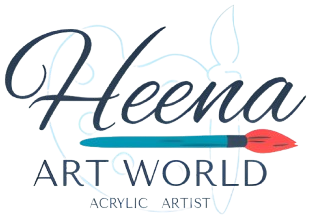
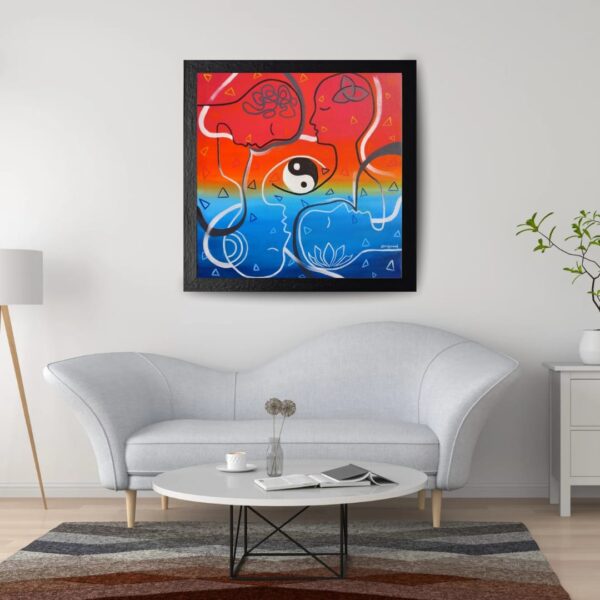
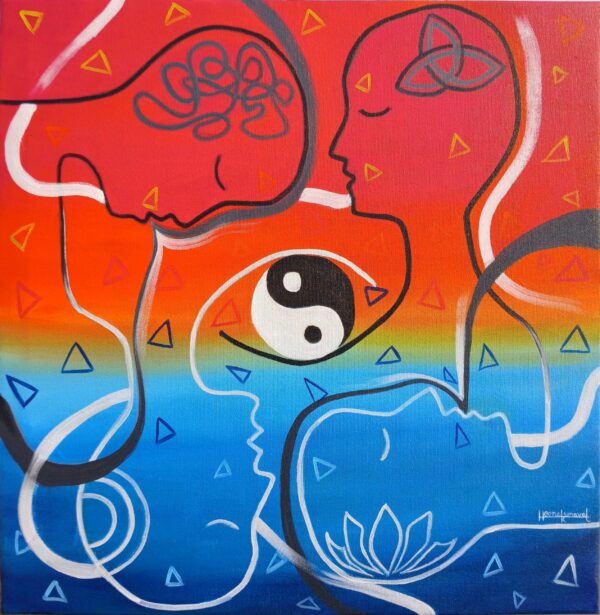
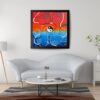
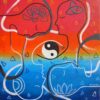
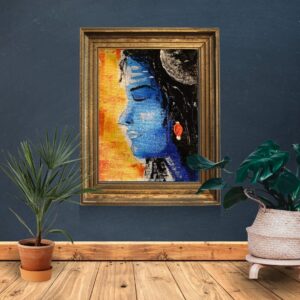
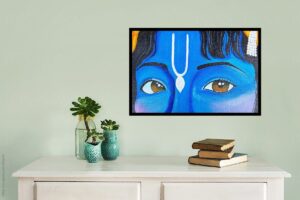
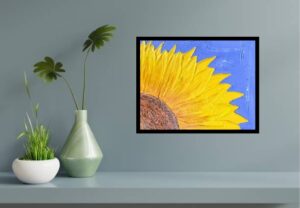
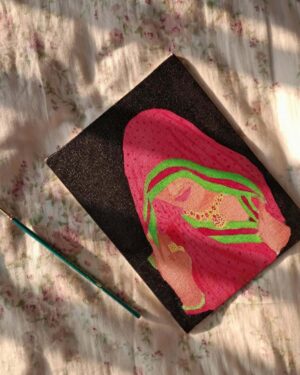
Reviews
There are no reviews yet.